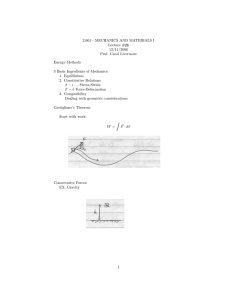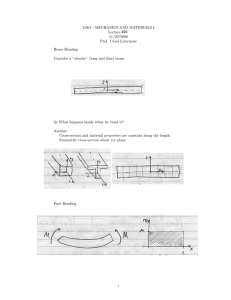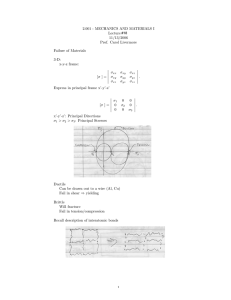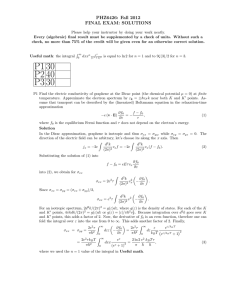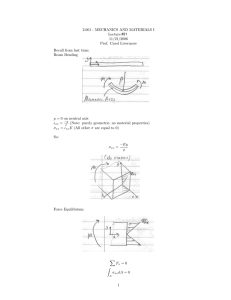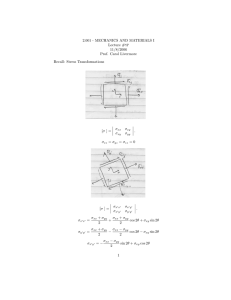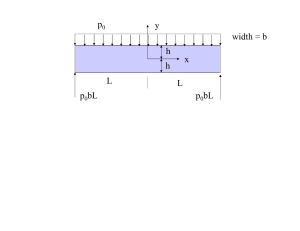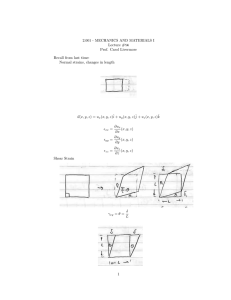1a 30 1b 20 2a 30 2b 20
advertisement
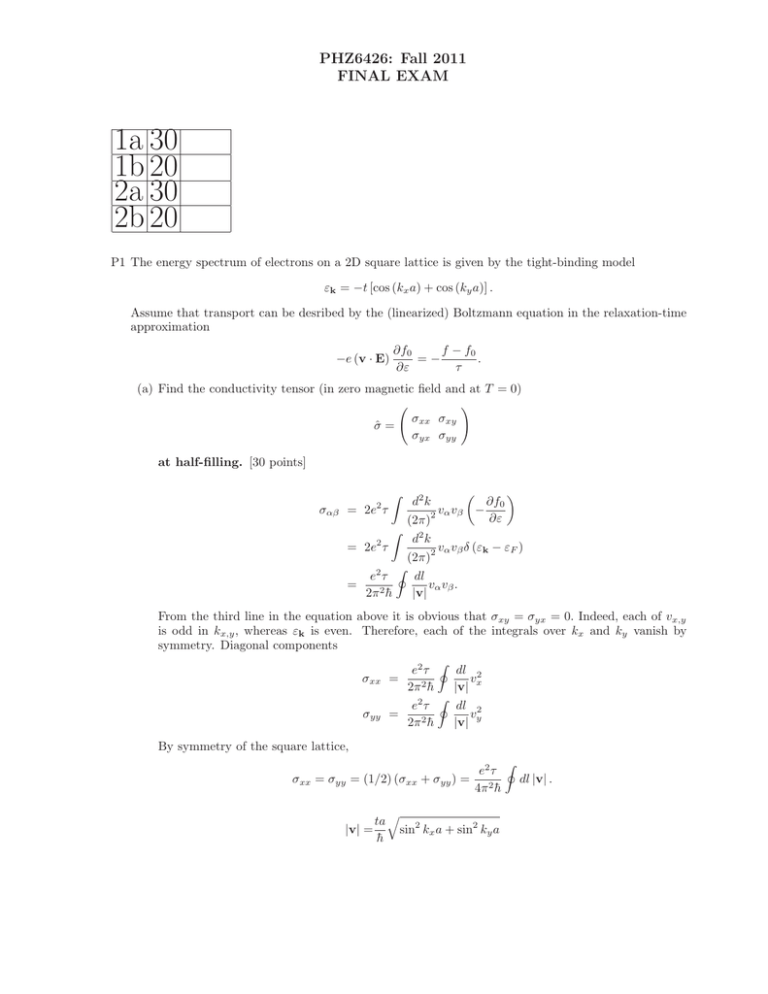
PHZ6426: Fall 2011 FINAL EXAM 1a 30 1b 20 2a 30 2b 20 P1 The energy spectrum of electrons on a 2D square lattice is given by the tight-binding model εk = −t [cos (kx a) + cos (ky a)] . Assume that transport can be desribed by the (linearized) Boltzmann equation in the relaxation-time approximation −e (v · E) ∂f0 f − f0 =− . ∂ε τ (a) Find the conductivity tensor (in zero magnetic field and at T = 0) ! σxx σxy σ̂ = σyx σyy at half-filling. [30 points] 2 σαβ = 2e τ = 2e2 τ Z d2 k 2 vα vβ (2π) Z d2 k ∂f0 − ∂ε 2 vα vβ δ (εk − εF ) (2π) I e2 τ dl = vα vβ . 2π 2 h̄ |v| From the third line in the equation above it is obvious that σxy = σyx = 0. Indeed, each of vx,y is odd in kx,y , whereas εk is even. Therefore, each of the integrals over kx and ky vanish by symmetry. Diagonal components I dl 2 e2 τ v σxx = 2π 2 h̄ |v| x I e2 τ dl 2 σyy = v 2π 2 h̄ |v| y By symmetry of the square lattice, σxx = σyy e2 τ = (1/2) (σxx + σyy ) = 4π 2 h̄ ta |v| = h̄ q sin2 kx a + sin2 ky a I dl |v| . √ On of the FS, ky = π/a − kx → |v| = 2ta |sin kx a| and dl = q one of the segments p √ 2 (dkx )2 + (dky ) = dkx 1 + (dky /dkx )2 = 2dkx σxx √ √ e2 τ ta Z π/a dkx sin (kx a) = σyy = 4 × 2 2 2 2 4π h̄h̄ 0 2 e2 τ t = 2 π h̄ h̄ Notice that the effective mass at the bottom of the band is related to t via 1 h̄2 = 2. ∗ m ta At half-filling, the number density n = 1/a2 . Therefore, the result above for σxx = σyy can be written as σxx = σyy = 2 ne2 τ , π 2 m∗ which is by a factor of 2/π 2 smaller than the prediction of the Drude theory for electrons with mass m∗ . (b) Suppose that the electric field is applied at angle θ to the x axis. Find the Joule heat generated per unit time per unit area of the sample. [20 points] jx = σxx E cos θ jy = σyy E sin θ Q = jx Ex + jy Ey = σxx E 2 cos2 θ + σyy E 2 sin2 θ = σxx E 2 = 2 e2 τ t 2 E . π 2 h̄ h̄ P2 (a) Find the energy spectrum in the nearest-neighbor hopping approximation of the tight-binding model for a simple hexagonal lattice. The hopping matrix element is t and the bond length is a. [30 points] Vectors connecting the central atom of the hexagon to its six nearest neighbors are √ ! 1 3 s1 = a , 2 2 s2 = a (1, 0) s3 s4 √ ! 1 3 ,− = a 2 2 √ ! 1 3 = a − ,− 2 2 s5 = a (−1, 0) √ ! 3 1 s6 = a − , 2 2 Diagonalizing the Hamiltonian Ĥ = −t X n.n. c†Rn cRn + H.c. , we obtain for the energy spectrum √ √ √ 3 3 i k 1 +k a −i kx 21 +ky 23 a i k 1 −k i εk = −t e x 2 y 2 +e + eikx a + e−ikx a + e x 2 y 2 + e # " √ ! √ ! 3 3 1 1 a + cos kx − ky a + cos (kx a) = −4t cos kx + ky 2 2 2 2 √ ky a 1 = −4t 2 cos kx a 3 cos + cos (kx a) 2 2 −kx 12 +ky √ 3 2 + c.c. (b) Find the approximate form of the energy spectrum and determine the tensor of effective mass near the Γ point (kx = ky = 0) of the Brillouin zone [20 points] 1 2 2 3 2 2 kx2 a2 = const + 3ta2 (kx2 + ky2 ) εk = −4t 2 1 − kx a 1 − ky a + 1 − 8 8 2 1 1 6ta2 = = 2 mxx myy h̄ 1 = 0. mxy
